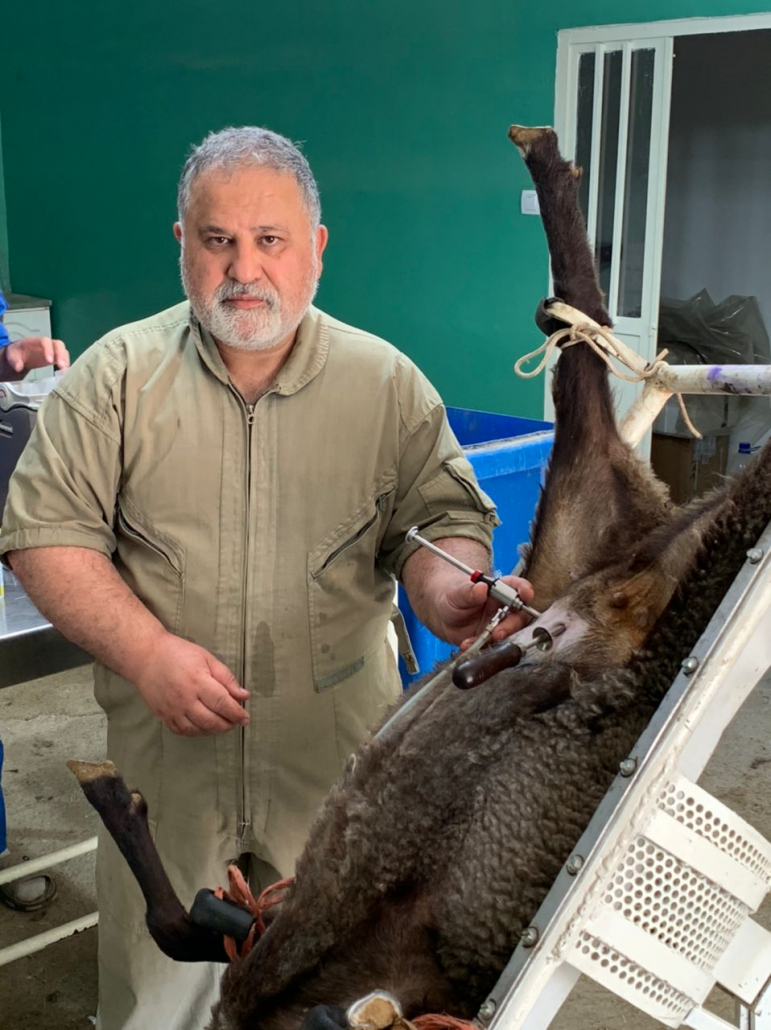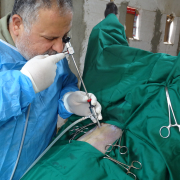Laparoscopic Artificial Insemination in Sheep
Following receiving a request by National Agriculture Biotechnology Research Institute in 2019, we have been assigned to inseminate nearly 500 Moghani ewes belonged to Jovein Agro-Industrial Company using Texel and Booroola frozen semen imported by the institute for research purposes. Unfortunately, only 269 frozen straws were available (113 Texel straws and 156 Booroola straws). We examined the semen and the concentration of some straws were good enough to be used for two inseminations. Therefore, we suggested to inseminate half straw from good quality straws for each ewe. It looked strange in the first instance to use one straw for two inseminations, but due to the lack of enough frozen straws, we decided for using half straw per ewe for some frozen straws. We have inseminated 170 ewes with one straw, 198 ewes with half straw. Luckily, we had access to use fresh semen collected from Romanov ram and sent to us from stud in north of Iran. The sample reached in our hand after 10 hrs. We inseminated 79 ewes between 10-20 hrs after receiving fresh semen and 20 ewes between 34 and 36 hrs after semen receival. Meanwhile, the extended fresh semen was kept in the cooled container. Estrous cycles of the ewes were synchronized using CIDR for 14 days in association with 400 IU eCG at the time of CIDR removal. Blind insemination was carried out 48 to 54 hrs after CIDR removal. Totally, we achieved 158 pregnancies out of 368 inseminations with frozen semen (42.9%). If we inseminate all ewes with full straw, considering 42.9% fertility rates, we could achieve only 115 pregnancies. Therefore, using half straw, we got 43 extra pregnancies. From fresh semen inseminations, 59 ewes (59.6%) became pregnant. In conclusion, the outcome of this work was 217 pregnancies (46.5%) from 467 ewes inseminated with fresh and frozen semen (Table 1).






Leave a Reply
Want to join the discussion?Feel free to contribute!